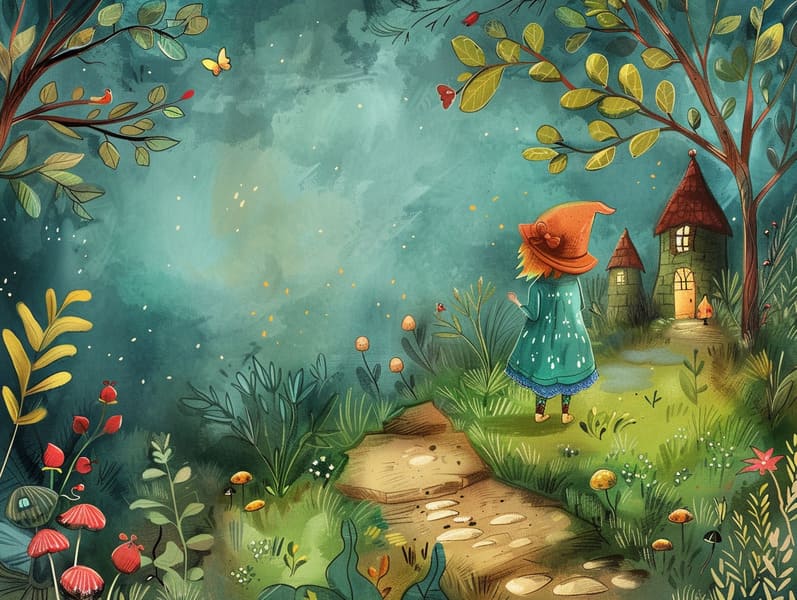The Beginning of Popular Fairy Tales with the Enduring Attraction.
The Beginning of Popular Fairy Tales with the Enduring Attraction.
Blog Article

Vintage fairy tales have ancient roots. These stories have been relayed from one generation to the next far before they were ever recorded. They emerged from a variety of civilizations, including Asian traditions. They were initially transmitted among older generations, often carrying themes and messages aligned with the societal norms and beliefs of the time.
The famous Grimm duo, Jacob and Wilhelm, were among the first to compile and publish many of these beloved fairy tales. Their volume, "Grimm's Fairy Stories," included tales like "The Story of Cinderella," "Little Brother and Little Sister," and "The True Story of Snow White," which have since become essentials in the world of famous fairy tales. Similarly, Hans Christian Andersen's charming fairy tales, such as "The Little Mermaid," and "The Ugly Duckling," have gained the love worldwide, ensuring their place in the pantheon of timeless fairy tales.
Despite their ancient origins, traditional fairy tales remain as pertinent as ever, especially as children's bedtime stories. These delightful tales are now available in diverse formats, including richly illustrated books, captivating animations, and online fairy tales.
Their enduring popularity can be ascribed to several enchanting factors:
Moral Lessons: Traditional fairy tales often illustrate important moral lessons. Tales like "The Tale of the Boy Who Cried Wolf" teach the merit of truth, while "The Tale of the Tortoise and the Hare" underline the virtues of perseverance and humility. These stories offer children clear distinctions between virtue and vice, molding their moral compass in a mild yet impactful way.
Compassion and Insight: Classic fairy tales frequently showcase figures facing challenges and problems, stimulating children to comprehend with their struggles and champion their triumphs. For instance, "Beauty's Beast" highlights the significance of seeing beyond looks to realize the true essence of a soul, developing empathy and insight.
Cultural Knowledge: Many traditional fairy tales are deeply ingrained in the cultural contexts from which they arose. Delving into these tales can provide delightful insights into different societies, enhancing a sense of cultural insight and perception.
Inventiveness and Imagination: The magical elements in old fairy tales—magical kingdoms—activate children’s dreams. These narratives take readers to mythical realms, inspiring innovative ideas and a sense of amazement that remains a lifetime.
Ancient fairy tales are not only fascinating but also instructive. They serve as bewitching tools in cultivating various brain and heart skills in young ones. When timeless fairy tales are recited, they enhance language development by bringing new words and detailed sentence structures. This practice also develops hearing perception and attention span, as the young keep up with the story, anticipating to see what happens next.
Furthermore, exploring the themes and characters of classic fairy tales can enhance cognitive skills and cognitive skills. Kids are led to discover patterns, anticipate outcomes, and figure out cause and effect. These debates also encourage little ones voice their thoughts and feelings, adding to their emotional intelligence.
In today’s digital age, the accessibility of digital storybooks has made these tales more available than ever. Web-based platforms and online apps feature large libraries of popular fairy tales that can be accessed or heard anytime, anywhere. Fairy tales spoken are particularly widespread, featuring an delightful method for the young to relish these charming tales. Read-aloud stories and read-aloud videos carry characters and settings to life, often accompanied by bewitching audio effects and tunes that amplify the narrative journey.
The timeless fascination of timeless fairy tales lies in their ability to adjust to present days while keeping their main lessons. Contemporary adaptations of these narratives often show more varied characters and modern settings, making them relevant to today’s audience. However, the main ideas of courage, kindheartedness, and lawfulness remain unchanged, continuing to move audiences of all ages.
Ancient fairy tales also offer a sense of ease and understanding. They give a structured narrative with a evident beginning, middle, and end, often ending with the resolution of conflicts and the triumph of right over wrong. This assuredness can be consoling for young readers, making known a sense of consistency in an inconstant world.
Classic fairy tales continue to mesmerize and guide new generations, maintaining their loveliness and impact in modern society. As nighttime stories for kids, they introduce a perfect blend of fascination and comprehension, enriching moral values, empathy, and creativity. The accessibility of digital fairy tales and the likability of fairy tales recited confirm that these this site classic tales remain accessible to new generations.
By preserving and telling these stories, we continue to recognize the rich tapestry of creativity and cultural heritage. Whether you are experiencing a vibrantly illustrated book, browsing a cyber library, or listening via an narrated book, the magic of ancient fairy tales is always within reach. These tales remind us of the everlasting ability of storytelling and its ability to link us across generations and cultures.
Even if you are perusing a vividly illustrated book, seeing a electronic collection, or playing an sound book, the beauty of bedtime fairy tales is always within reach.
These tales reveal of the invariable magic of storytelling and its ability to tie us across epochs and places, making a tie that captivates and teaches alike.